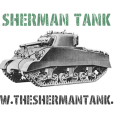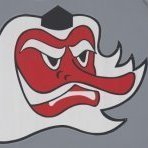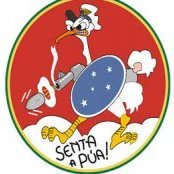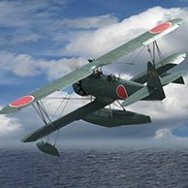
AlexM
-
Posts
571 -
Joined
-
Last visited
-
Days Won
8
Reputation Activity
-
 AlexM reacted to wunwinglow in Recommendation for HIPS filament with 2.85 mm diameter?
AlexM reacted to wunwinglow in Recommendation for HIPS filament with 2.85 mm diameter?
Great tests! Can I suggest using a PEI bed, without anything other than the occasional wash with slightly soapy water, solved all my adhesion issues at a stroke. Bed temp 90 C. Also, printing in an enclosure solved all my structural issues, as it keeps the air around the print at a much more stable, and elevated temperature, so shrinkage is reduced, internal stress is less and the model is less likely to delaminate. I found running the extruder on the hotter end of the range for HIPS made the adhesion between layers much better. Turn off the nozzle cooling fan as well, not needed for HIPS.
Have fun!
-
 AlexM got a reaction from Martinnfb in F7F-3 Tigercat - BuNo 80405 - VMF 312 MCAS - El Toro, CA 1946
AlexM got a reaction from Martinnfb in F7F-3 Tigercat - BuNo 80405 - VMF 312 MCAS - El Toro, CA 1946
Quite an understatement. Looks great so far. Your patience with this kit obviously pays off
-
 AlexM got a reaction from Martinnfb in F7F-3 Tigercat - BuNo 80405 - VMF 312 MCAS - El Toro, CA 1946
AlexM got a reaction from Martinnfb in F7F-3 Tigercat - BuNo 80405 - VMF 312 MCAS - El Toro, CA 1946
Makes me jealous
-
 AlexM got a reaction from TankBuster in Recommendation for HIPS filament with 2.85 mm diameter?
AlexM got a reaction from TankBuster in Recommendation for HIPS filament with 2.85 mm diameter?
Let’s see how the materials perform whit a wing-section. This part is way more difficult to print, since on all parts, the area at the leading and especially trailing edge, where the meet the printing plate, had a tendency to warp/lift upwards. To improve adhesion on the printing plate, the parts were printed with so called brim, meaning a thin additional layer around the actual part that is automatically created in the printing software.
Additional the lifting at the leading and trailing edge, there is a crack on the Kodak part. This probably is a tension crack that can appear when the printed parts are cooling down from 250° and thereby shrinking a bit. So, cracks are not good on a wing…
The Kimya part has lifting at the usual areas, but no cracks:
The same can be said about the Orbi-Tech part. The e-Sun part, on the other hand, has two, maybe even three slight cracks:
The eins3D part has no cracks, but the most lifting/warping at the trailing/leading edge.
Later, I printed the wing part with lower printing speed, hoping to prevent cracks (no pictures). Strangely, now there appeared cracks on the Kimy and eins3D part.
So all in all, the Orbi-Tech filament performed best on this test. Keep in mind that the results can vary a lot, depending on the printer and settings. The problem of warping/lifting when printing high thin parts remains
Cheers
Alex
-
 AlexM got a reaction from LSP_Kevin in Recommendation for HIPS filament with 2.85 mm diameter?
AlexM got a reaction from LSP_Kevin in Recommendation for HIPS filament with 2.85 mm diameter?
Let’s see how the materials perform whit a wing-section. This part is way more difficult to print, since on all parts, the area at the leading and especially trailing edge, where the meet the printing plate, had a tendency to warp/lift upwards. To improve adhesion on the printing plate, the parts were printed with so called brim, meaning a thin additional layer around the actual part that is automatically created in the printing software.
Additional the lifting at the leading and trailing edge, there is a crack on the Kodak part. This probably is a tension crack that can appear when the printed parts are cooling down from 250° and thereby shrinking a bit. So, cracks are not good on a wing…
The Kimya part has lifting at the usual areas, but no cracks:
The same can be said about the Orbi-Tech part. The e-Sun part, on the other hand, has two, maybe even three slight cracks:
The eins3D part has no cracks, but the most lifting/warping at the trailing/leading edge.
Later, I printed the wing part with lower printing speed, hoping to prevent cracks (no pictures). Strangely, now there appeared cracks on the Kimy and eins3D part.
So all in all, the Orbi-Tech filament performed best on this test. Keep in mind that the results can vary a lot, depending on the printer and settings. The problem of warping/lifting when printing high thin parts remains
Cheers
Alex
-
 AlexM reacted to Iain in Recommendation for HIPS filament with 2.85 mm diameter?
AlexM reacted to Iain in Recommendation for HIPS filament with 2.85 mm diameter?
The two technologies complement each other perfectly IMHO Brian - and FDM printing with HIPS for larger items just works so well on so many levels.
Iain
-
 AlexM reacted to Out2gtcha in Recommendation for HIPS filament with 2.85 mm diameter?
AlexM reacted to Out2gtcha in Recommendation for HIPS filament with 2.85 mm diameter?
Good to know for future reference.
I've got a really nice, and quite fast liquid resin 12k printer atm, (actually two of them) and next year I'm going to invest in a very large platform FDM printer to go along with my resin printer so I can print out some Mandalorian armor parts.
I'll definitely be needing some advice on filaments when I get there.
-
 AlexM reacted to wunwinglow in Recommendation for HIPS filament with 2.85 mm diameter?
AlexM reacted to wunwinglow in Recommendation for HIPS filament with 2.85 mm diameter?
I get mine from www.123-3d.co.uk , excellent service, no commercial links, just a happy customer. Their HIPS is my standard, works really well on my little Ender 3. Currently working up a Hawker P 1121, slowly.......
-
 AlexM got a reaction from BiggTim in Recommendation for HIPS filament with 2.85 mm diameter?
AlexM got a reaction from BiggTim in Recommendation for HIPS filament with 2.85 mm diameter?
Hello there,
I have a question for those of you who have a FDM printer which runs with 2.85 mm diameter filament.
There is a printing material called HIPS, which stands for High Impact Polystyrene. It is basically the same kind of material that is used for model kits, and therefore can be glued with typical model glue.
Over the years I tried HIPS filament from various manufactures, and experienced quite some differences. Some are harder, some are softer. For me, the most important characteristic is how well the printed layers adhere together during and of course after printing. Some filaments proved to be rather weak in that regard.
For my 1.75 mm diameter printer, I use HIPS filament for Fiberlogy, and I like it very much. But unfortunately, Fiberlogy doesn’t produce HIPS with 2.85 mm diameter.
So I wonder which brand of HIPS filament with 2.85 mm diameter you can recommend.
Cheers
Alex
-
 AlexM got a reaction from JeepsGunsTanks in Video about Takom factory showing how model kits are produced
AlexM got a reaction from JeepsGunsTanks in Video about Takom factory showing how model kits are produced
Here is a youtube video from german model shop Modellbau König, visiting the production site of Takom in China. It's in german language, but probably still very interesting for non-german speakers:
https://www.youtube.com/watch?v=Lf9yUqXC2_A
Even though it's somehow shown on video (starting at about minute 21), i don't quite understand the process of how the steel molds are made from CNC machined copper molds
Cheers
Alex
-
 AlexM got a reaction from Swatto in Video about Takom factory showing how model kits are produced
AlexM got a reaction from Swatto in Video about Takom factory showing how model kits are produced
Here is a youtube video from german model shop Modellbau König, visiting the production site of Takom in China. It's in german language, but probably still very interesting for non-german speakers:
https://www.youtube.com/watch?v=Lf9yUqXC2_A
Even though it's somehow shown on video (starting at about minute 21), i don't quite understand the process of how the steel molds are made from CNC machined copper molds
Cheers
Alex
-
 AlexM got a reaction from scvrobeson in Video about Takom factory showing how model kits are produced
AlexM got a reaction from scvrobeson in Video about Takom factory showing how model kits are produced
Here is a youtube video from german model shop Modellbau König, visiting the production site of Takom in China. It's in german language, but probably still very interesting for non-german speakers:
https://www.youtube.com/watch?v=Lf9yUqXC2_A
Even though it's somehow shown on video (starting at about minute 21), i don't quite understand the process of how the steel molds are made from CNC machined copper molds
Cheers
Alex
-
 AlexM got a reaction from Fanes in Video about Takom factory showing how model kits are produced
AlexM got a reaction from Fanes in Video about Takom factory showing how model kits are produced
Here is a youtube video from german model shop Modellbau König, visiting the production site of Takom in China. It's in german language, but probably still very interesting for non-german speakers:
https://www.youtube.com/watch?v=Lf9yUqXC2_A
Even though it's somehow shown on video (starting at about minute 21), i don't quite understand the process of how the steel molds are made from CNC machined copper molds
Cheers
Alex
-
 AlexM got a reaction from Dany Boy in Video about Takom factory showing how model kits are produced
AlexM got a reaction from Dany Boy in Video about Takom factory showing how model kits are produced
Here is a youtube video from german model shop Modellbau König, visiting the production site of Takom in China. It's in german language, but probably still very interesting for non-german speakers:
https://www.youtube.com/watch?v=Lf9yUqXC2_A
Even though it's somehow shown on video (starting at about minute 21), i don't quite understand the process of how the steel molds are made from CNC machined copper molds
Cheers
Alex
-
 AlexM got a reaction from John1 in Video about Takom factory showing how model kits are produced
AlexM got a reaction from John1 in Video about Takom factory showing how model kits are produced
Here is a youtube video from german model shop Modellbau König, visiting the production site of Takom in China. It's in german language, but probably still very interesting for non-german speakers:
https://www.youtube.com/watch?v=Lf9yUqXC2_A
Even though it's somehow shown on video (starting at about minute 21), i don't quite understand the process of how the steel molds are made from CNC machined copper molds
Cheers
Alex
-
 AlexM got a reaction from LSP_K2 in Video about Takom factory showing how model kits are produced
AlexM got a reaction from LSP_K2 in Video about Takom factory showing how model kits are produced
Here is a youtube video from german model shop Modellbau König, visiting the production site of Takom in China. It's in german language, but probably still very interesting for non-german speakers:
https://www.youtube.com/watch?v=Lf9yUqXC2_A
Even though it's somehow shown on video (starting at about minute 21), i don't quite understand the process of how the steel molds are made from CNC machined copper molds
Cheers
Alex
-
 AlexM reacted to waroff in Breguet 691 / 693, project 1/32 scale resin
AlexM reacted to waroff in Breguet 691 / 693, project 1/32 scale resin
Good evening ,
to save time, part of furnishing and equipment will be Etienne's.(Renaissance)
Initially planned for the 1/72 Heller and Azur, and at 1/48 for that of Fonderie Miniature,
this equipment will need to be slightly modified to fitted into the Breguet 1/32.
I had started to create these elements, but to continue would be a waste of time because of duplication
useless and Etienne's work is precise and detailed, we might as well exploit it and integrate it if Etienne agree it
I can therefore look into other problems such as creating an oven for thermoforming
the canopies and airscoop of the engine cowlings.
Currently I am preparing the molds for the machine gunner's canopies, the bomb bay doors, the windows....
I also need to think about made the front of the Gnome Rhône 14M engine
to serve as support for the propellers (if there is a courageous person to draw this engine to create 3D stl file, I would provide it with the doc :kiss2: ) .
Some details to add in the nacelles such as the strut embedded in recesses provided on the surface
of fuel tanks . these two sides will reinforce the fixing and
the holding of the landing gear on the wing.
after that, the Breguet will head to Santa's caban for distribution to the cottages....
There is still work to be done before the first 15 cells are complete, but it's playable...
I am quite advanced in discovering the main activities of the design of this model,
of the tools used, the implementation of the materials used and the losses, to give you
within two weeks an idea of the cost of a copy.
The staggering is defined by the order of registration on the list (in the firts pages of this thread), withdrawals will benefit
to the following who will advance one place.
You can withdraw before your turn arrives...
thaks for your attention
-
 AlexM got a reaction from TimW in Hobby Boss B-24D
AlexM got a reaction from TimW in Hobby Boss B-24D
Hi there,
some time ago, I started with my Hobby Boss B-24D kit. Since the fuselage interiors are pretty much finished, I thought it's time to share some picutes.
The fuselage section in front of the nose wheel-well was cut off and replaced with my own 3d-printed version, since I wasn't happy with the cross-section shape of the kit at this area.
Like most/all aircrafts with nose gear, it would tilt backwards without weights on the front side, especially with its heavy tail. Therefore, I added lots of lead plates between the cockpit floor and the wheel well, as well as in front of the cockpit. Together with some additional lead below the floor at the bombardier station, this should be sufficient, although this makes the whole model quite heavy.
To hide the lead plates, I added a styrene plated which contians some diagrams from the manual.
The kit's bulkhead between the cockpit and radio station was replaced by a more open one made of styrene. I also added some 3d-printed radio-equipment. The side-walls got some more structure details.
Since I wasn't happy with the shape of the kit's bombs, I replaced them with my own 3d-printed ones.
That's it for now.
Cheers
Alex
-
 AlexM got a reaction from Kagemusha in Infinity Models Aichi D3A1 Val
AlexM got a reaction from Kagemusha in Infinity Models Aichi D3A1 Val
Hello everyone, time for an update:
In the last days I’ve been busy painting the rear fuselage and wing-tips. Fist, some old-school pre-shading. Then, the rear fuselage/tail was painted yellow. This was followed by some major masking for the areas that should remain yellow. Especially the three diagonal bands around the fuselage proved to be challenging.
Here you can see the separate elevators. I drilled 1 mm holes at the position of the two inner hinges, so that the elevators can be connected to the tail by 1 mm styrene rod, which is hidden by the hinges. This works pretty well, and the elevators now won’t need any glue.
At the risk of sounding blasphemous, I would like to note that I am not the biggest fan of separate rudders/ flaps in general, as I usually always display them in a neutral position. For me, those separate parts that are common in modern day kits very often are difficult to attach without making a glue-mess. In this case, the flaps and ailerons turned out OK. But on my build, the ailerons are a bit too thick compared to the wings, especially at the inner end. I attached them so they align well to the upper wing, but on the under side, they stand out about 0,5mm at the inner end. So, for everyone who builds this kit, I recommend to thin them down a bit.
After masking the yellow areas, red paint was sprayed and masked. Finally came the camouflage colors. I used Revell 39 for the green. Then came the thrilling moment of removing the masks. Besides some flaws here and there, that will be addressed later, I can at least say that it didn’t turn into a complete disaster
Cheers
Alex
-
 AlexM got a reaction from Fanes in Infinity Models Aichi D3A1 Val
AlexM got a reaction from Fanes in Infinity Models Aichi D3A1 Val
Hello everyone, time for an update:
In the last days I’ve been busy painting the rear fuselage and wing-tips. Fist, some old-school pre-shading. Then, the rear fuselage/tail was painted yellow. This was followed by some major masking for the areas that should remain yellow. Especially the three diagonal bands around the fuselage proved to be challenging.
Here you can see the separate elevators. I drilled 1 mm holes at the position of the two inner hinges, so that the elevators can be connected to the tail by 1 mm styrene rod, which is hidden by the hinges. This works pretty well, and the elevators now won’t need any glue.
At the risk of sounding blasphemous, I would like to note that I am not the biggest fan of separate rudders/ flaps in general, as I usually always display them in a neutral position. For me, those separate parts that are common in modern day kits very often are difficult to attach without making a glue-mess. In this case, the flaps and ailerons turned out OK. But on my build, the ailerons are a bit too thick compared to the wings, especially at the inner end. I attached them so they align well to the upper wing, but on the under side, they stand out about 0,5mm at the inner end. So, for everyone who builds this kit, I recommend to thin them down a bit.
After masking the yellow areas, red paint was sprayed and masked. Finally came the camouflage colors. I used Revell 39 for the green. Then came the thrilling moment of removing the masks. Besides some flaws here and there, that will be addressed later, I can at least say that it didn’t turn into a complete disaster
Cheers
Alex
-
 AlexM got a reaction from Fanes in Infinity Models Aichi D3A1 Val
AlexM got a reaction from Fanes in Infinity Models Aichi D3A1 Val
To quote Chuck in his epic A-20G build: She's got legs:
At the rear fin, tare no hinges for the rudder, so I added some rectangular Evergreen stripes, which also help to attach the rudder.
Rudder glued in place:
Slowly but steadily, I'm getting closer to the point where I can start painting.
Cheers
Alex
-
 AlexM got a reaction from Victor K2 in Infinity Models Aichi D3A1 Val
AlexM got a reaction from Victor K2 in Infinity Models Aichi D3A1 Val
Hello everyone, time for an update:
In the last days I’ve been busy painting the rear fuselage and wing-tips. Fist, some old-school pre-shading. Then, the rear fuselage/tail was painted yellow. This was followed by some major masking for the areas that should remain yellow. Especially the three diagonal bands around the fuselage proved to be challenging.
Here you can see the separate elevators. I drilled 1 mm holes at the position of the two inner hinges, so that the elevators can be connected to the tail by 1 mm styrene rod, which is hidden by the hinges. This works pretty well, and the elevators now won’t need any glue.
At the risk of sounding blasphemous, I would like to note that I am not the biggest fan of separate rudders/ flaps in general, as I usually always display them in a neutral position. For me, those separate parts that are common in modern day kits very often are difficult to attach without making a glue-mess. In this case, the flaps and ailerons turned out OK. But on my build, the ailerons are a bit too thick compared to the wings, especially at the inner end. I attached them so they align well to the upper wing, but on the under side, they stand out about 0,5mm at the inner end. So, for everyone who builds this kit, I recommend to thin them down a bit.
After masking the yellow areas, red paint was sprayed and masked. Finally came the camouflage colors. I used Revell 39 for the green. Then came the thrilling moment of removing the masks. Besides some flaws here and there, that will be addressed later, I can at least say that it didn’t turn into a complete disaster
Cheers
Alex
-
 AlexM got a reaction from TAG in Infinity Models Aichi D3A1 Val
AlexM got a reaction from TAG in Infinity Models Aichi D3A1 Val
Hello everyone, time for an update:
In the last days I’ve been busy painting the rear fuselage and wing-tips. Fist, some old-school pre-shading. Then, the rear fuselage/tail was painted yellow. This was followed by some major masking for the areas that should remain yellow. Especially the three diagonal bands around the fuselage proved to be challenging.
Here you can see the separate elevators. I drilled 1 mm holes at the position of the two inner hinges, so that the elevators can be connected to the tail by 1 mm styrene rod, which is hidden by the hinges. This works pretty well, and the elevators now won’t need any glue.
At the risk of sounding blasphemous, I would like to note that I am not the biggest fan of separate rudders/ flaps in general, as I usually always display them in a neutral position. For me, those separate parts that are common in modern day kits very often are difficult to attach without making a glue-mess. In this case, the flaps and ailerons turned out OK. But on my build, the ailerons are a bit too thick compared to the wings, especially at the inner end. I attached them so they align well to the upper wing, but on the under side, they stand out about 0,5mm at the inner end. So, for everyone who builds this kit, I recommend to thin them down a bit.
After masking the yellow areas, red paint was sprayed and masked. Finally came the camouflage colors. I used Revell 39 for the green. Then came the thrilling moment of removing the masks. Besides some flaws here and there, that will be addressed later, I can at least say that it didn’t turn into a complete disaster
Cheers
Alex
-
 AlexM got a reaction from MikeMaben in Infinity Models Aichi D3A1 Val
AlexM got a reaction from MikeMaben in Infinity Models Aichi D3A1 Val
Hello everyone, time for an update:
In the last days I’ve been busy painting the rear fuselage and wing-tips. Fist, some old-school pre-shading. Then, the rear fuselage/tail was painted yellow. This was followed by some major masking for the areas that should remain yellow. Especially the three diagonal bands around the fuselage proved to be challenging.
Here you can see the separate elevators. I drilled 1 mm holes at the position of the two inner hinges, so that the elevators can be connected to the tail by 1 mm styrene rod, which is hidden by the hinges. This works pretty well, and the elevators now won’t need any glue.
At the risk of sounding blasphemous, I would like to note that I am not the biggest fan of separate rudders/ flaps in general, as I usually always display them in a neutral position. For me, those separate parts that are common in modern day kits very often are difficult to attach without making a glue-mess. In this case, the flaps and ailerons turned out OK. But on my build, the ailerons are a bit too thick compared to the wings, especially at the inner end. I attached them so they align well to the upper wing, but on the under side, they stand out about 0,5mm at the inner end. So, for everyone who builds this kit, I recommend to thin them down a bit.
After masking the yellow areas, red paint was sprayed and masked. Finally came the camouflage colors. I used Revell 39 for the green. Then came the thrilling moment of removing the masks. Besides some flaws here and there, that will be addressed later, I can at least say that it didn’t turn into a complete disaster
Cheers
Alex
-
 AlexM got a reaction from denders in Infinity Models Aichi D3A1 Val
AlexM got a reaction from denders in Infinity Models Aichi D3A1 Val
Hello everyone, time for an update:
In the last days I’ve been busy painting the rear fuselage and wing-tips. Fist, some old-school pre-shading. Then, the rear fuselage/tail was painted yellow. This was followed by some major masking for the areas that should remain yellow. Especially the three diagonal bands around the fuselage proved to be challenging.
Here you can see the separate elevators. I drilled 1 mm holes at the position of the two inner hinges, so that the elevators can be connected to the tail by 1 mm styrene rod, which is hidden by the hinges. This works pretty well, and the elevators now won’t need any glue.
At the risk of sounding blasphemous, I would like to note that I am not the biggest fan of separate rudders/ flaps in general, as I usually always display them in a neutral position. For me, those separate parts that are common in modern day kits very often are difficult to attach without making a glue-mess. In this case, the flaps and ailerons turned out OK. But on my build, the ailerons are a bit too thick compared to the wings, especially at the inner end. I attached them so they align well to the upper wing, but on the under side, they stand out about 0,5mm at the inner end. So, for everyone who builds this kit, I recommend to thin them down a bit.
After masking the yellow areas, red paint was sprayed and masked. Finally came the camouflage colors. I used Revell 39 for the green. Then came the thrilling moment of removing the masks. Besides some flaws here and there, that will be addressed later, I can at least say that it didn’t turn into a complete disaster
Cheers
Alex









.thumb.jpg.745e9c32fdfafef712dcea77f75e8a27.jpg)



